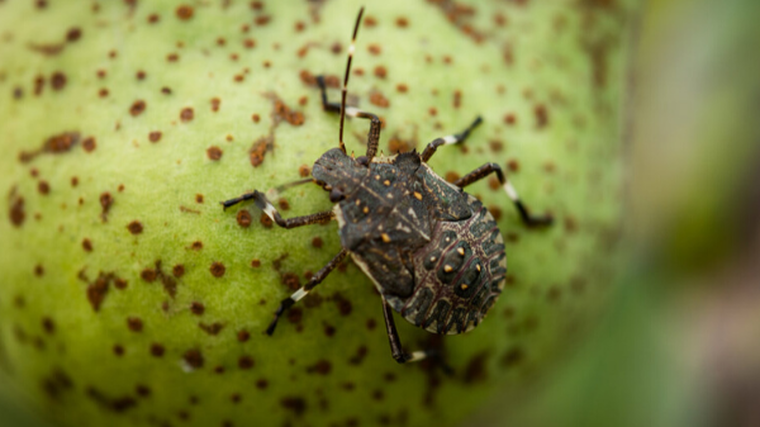New Zealand extra wary of stink bugs after European surge

New Zealand continues to be on high alert for an invasion of brown marmorated stink bugs (BMSBs) with farmers across Europe reporting record devastation.
Italy has been hit hard during its summer season with damage to fruit crops including apples, pears, kiwifruit, grapes and stone fruit exceeding about NZ$675 million.
Scientists in New Zealand have been working alongside Italian colleagues to help develop new methods for monitoring and controlling the bugs. Like New Zealand, Italy has a wide range of produce, often grown in relatively small, mixed plots. This system works in the bugs’ favour because they can easily move between crops.
“There tends to be mixed cropping systems where you might have kiwifruit in one field and pears in another,” says Dr Catherine Duthie, of the Ministry for Primary Industries (MPI).
“That provides a good opportunity for bugs to move around and feed on their preferred fruit.”
BMSBs originate from Asia where their numbers are kept in-check by predators such as the samurai wasp, which lays its eggs inside the bugs’ eggs. About the same size as an ant and – reportedly – with none of the habits of common wasps that dominate Kiwi summers, the samurai wasp has approval for release in this country if a stink bug invasion were to happen.
In northern Italy, Dr Lara Maistrello is breeding her homeland’s native relative of the samurai wasp to see how well it does in the fight against BMSBs.
Italy's biosecurity laws allow no path for releasing an imported biological control, such the samurai wasp, but farmers are lobbying for the legislation to be changed. Maistrello says the growth in the stink bug population, first detected in Italy in 2008, has been fast.
Dr Max Suckling, a research scientist with New Zealand Plant & Food, is working on a range of possible controls against the BMSB in Trentino, further north in Italy, including new traps and other biological controls.
He describes the BMSB as super-pest because of the scale of damage and points to the fact one bug can create 125 in a year. The bugs are also good at spreading across a country.
“It’s a hitchhiker and spreads quickly,” Suckling says. “In a region like this, where you can hear trains, and see cars and trucks, just moving things around, bugs are hopping on and hopping off. The same thing will happen in New Zealand, it will move through the country quickly. And if it’s a female and she’s able to lay eggs, she will establish a new population quickly.”
With Italy now in winter, BMSBs are in a state of hibernation and seeking refuge inside houses or commercial buildings by the thousands. This is also where the bugs pose the greatest risk of reaching our shore. For example, in 2018 a box of shoes purchased from Italy on eBay arrived containing 26 live stinkbugs. Imports from the bugs’ home countries in Asia are also a threat.
“They might hide out in a used or new car that gets shipped to New Zealand,” says Duthie. “They hide in places like within door panels and right within seats, places that we can’t visually find them. When they come to New Zealand, the length of the day tells them, ‘it’s summertime. It’s time to feed and reproduce.’”
Any possible stink-bug sightings of should be reported to the MPI’s hotline on 0800-809-966.





